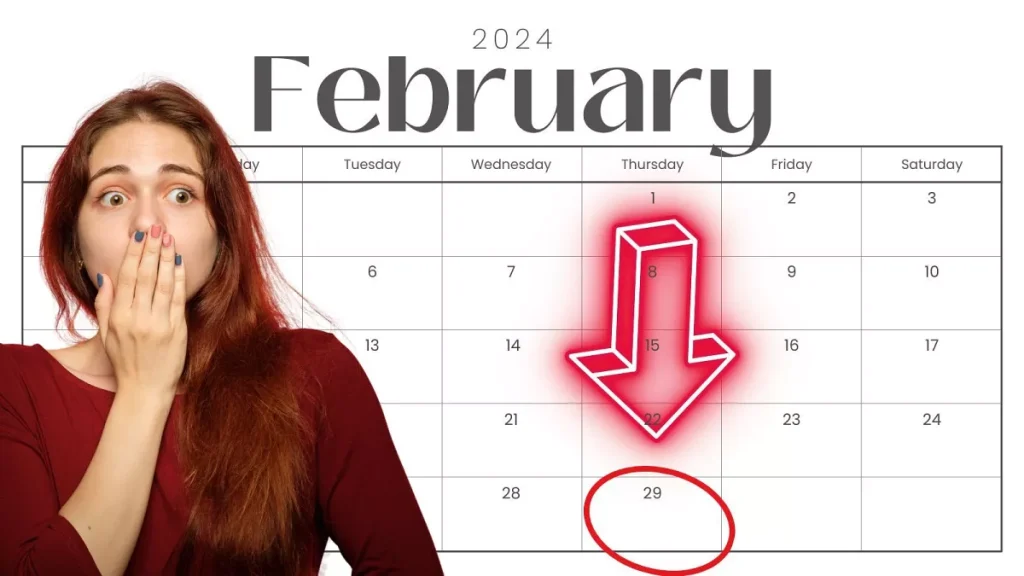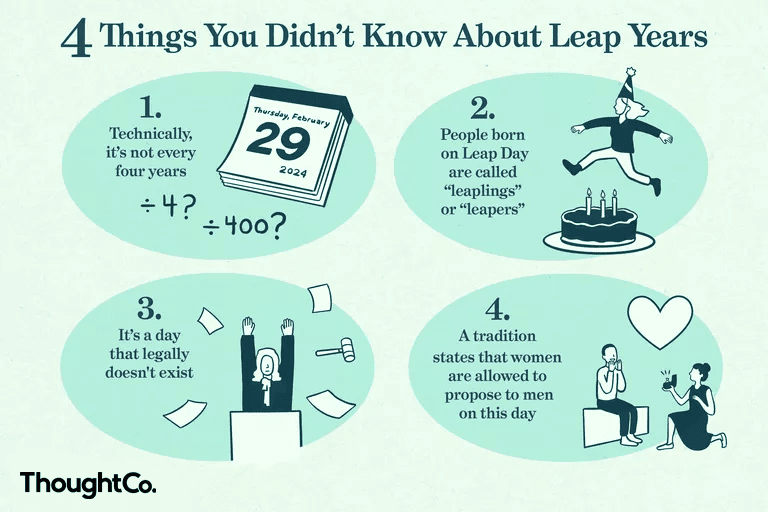Leap year, with its extra day every four years, adds a touch of quirkiness to our calendar. While it might seem like an arbitrary addition, it’s actually a crucial element in keeping our calendar aligned with the Earth’s revolution around the sun. But beyond its astronomical purpose, leap year also comes with a surprising amount of history, folklore, and even a dash of controversy. So, let’s delve into the fascinating world of leap years and explore some interesting facts you might not have known.
1. The Extra Day: Keeping Our Calendar in Sync in leap year

The Earth doesn’t take exactly 365 days to orbit the sun. It actually takes about 365.2422 days, which translates to roughly 365 days, 5 hours, 48 minutes, and 45 seconds. This might seem insignificant, but over time, it adds up. Without the occasional “extra day” added to February, our calendar would drift out of sync with the seasons by about 24 days every century. This is where the leap year comes in, adding that extra day (February 29th) to compensate for the leftover time and keep our calendar aligned with the solar year.
2. A Legacy from Julius Caesar: The Julian Calendar

The concept of the leap year dates back to the Roman Empire. In 46 BCE, Julius Caesar, in collaboration with astronomer Sosigenes of Alexandria, implemented the Julian calendar. This calendar established the concept of a leap year occurring every four years, with the exception of century years (years divisible by 100 but not by 400). While not entirely perfect, the Julian calendar marked a significant step towards a more accurate calendar system.
3. The Leap Year Bug: Refining the System

Despite the adjustment introduced by the Julian calendar, a small discrepancy remained. The actual length of a solar year is slightly less than 365.25 days, and the Julian calendar’s system of adding a leap year every four years ended up being slightly too frequent. This resulted in the calendar slowly drifting out of sync again, albeit at a slower pace. To address this, Pope Gregory XIII introduced the Gregorian calendar in 1582. This refined system implemented a more precise formula for determining leap years, excluding leap years for century years unless they are also divisible by 400. This is the calendar system we use today and ensures minimal drift over centuries.
4. Leap Day Traditions: Celebrating the Extra Day in leap year

Leap year, and specifically February 29th, has spawned various traditions and beliefs around the world. In Ireland and Scotland, Leap Day is associated with a unique tradition where women are allowed to propose marriage to men. This tradition supposedly originated from a leap-year proposal by Saint Brigid of Kildare to an Irish monk, who reportedly requested a four-year wait for his response. While not as widely practiced today, the tradition continues to be celebrated in some regions and adds a touch of playful history to the day.
5. Leap Year Babies: A Unique Birthday

Being born on February 29th makes you a “leapling” – a special group of individuals who celebrate their birthdays only once every four years. This unique birthday comes with its own set of quirks. Leap year babies might choose to celebrate on February 28th, March 1st, or even wait for the actual February 29th, depending on their personal preference. Some even joke about having only a quarter of the birthdays compared to others!
6. Leap Year Superstitions: A Mix of Luck and Misfortune

Across different cultures, leap years have been associated with varying beliefs and superstitions. In some cultures, leap years are considered to be lucky or bring good fortune. In others, they are associated with misfortune, bad weather, and even increased risks of accidents. It’s important to remember that these are just cultural beliefs and not supported by scientific evidence.
7. Leap Year Celebrations: Embracing the Extra Day

Leap years present an opportunity to celebrate and embrace the unique day. Some individuals organize special birthday parties for leaplings, while others hold events specifically themed around the occasion. In some parts of Greece, it’s considered bad luck to get married during a leap year, while others view it as a time for festivities and renewal.
8. Leap Year Fun Facts: A Few Quirks

- Leap Year Babies Around the World: There are an estimated 4.1 million leaplings globally, making them a relatively rare group.
- Leap Year Capitals: Two towns claim the title of “Leap Year Capital of the World”: Leap Castle in Ireland and Limerick, Ireland. Both towns hold festivities and events to celebrate the extra day.
- Leap Year Proposals: While the tradition of women proposing to men on February 29th is not as prevalent today, it continues to be a fun fact associated with the day.
- Leap Year and Taxes: In some countries, employees might technically work for “free” on February 29th as their salaries are usually calculated based on a fixed monthly income.
- Calendar Oddities: Every leap year, January, April, and July all begin on the same day of the week. Additionally, there are 527,040 minutes in a leap year compared to the standard 525,600 minutes in a typical year.
9. Leap Year in the Future: Maintaining Accuracy

The Gregorian calendar, with its refined leap year system, is expected to remain accurate for thousands of years. However, it’s not perfect. Over even longer timeframes, a slight discrepancy will still exist. Scientists have proposed even more precise calendar systems to address this, but for now, the Gregorian calendar continues to serve us well.
Leap year, with its unique blend of astronomical necessity, historical quirks, and cultural traditions, serves as a reminder of the intricate relationship between time, our planet, and human ingenuity. It’s a day that not only keeps our calendar in sync but also sparks curiosity, fosters unique customs, and adds a touch of fun to the year. So, the next time February 29th rolls around, embrace the extra day, celebrate its significance, and learn something new about this fascinating calendar phenomenon.






GIPHY App Key not set. Please check settings